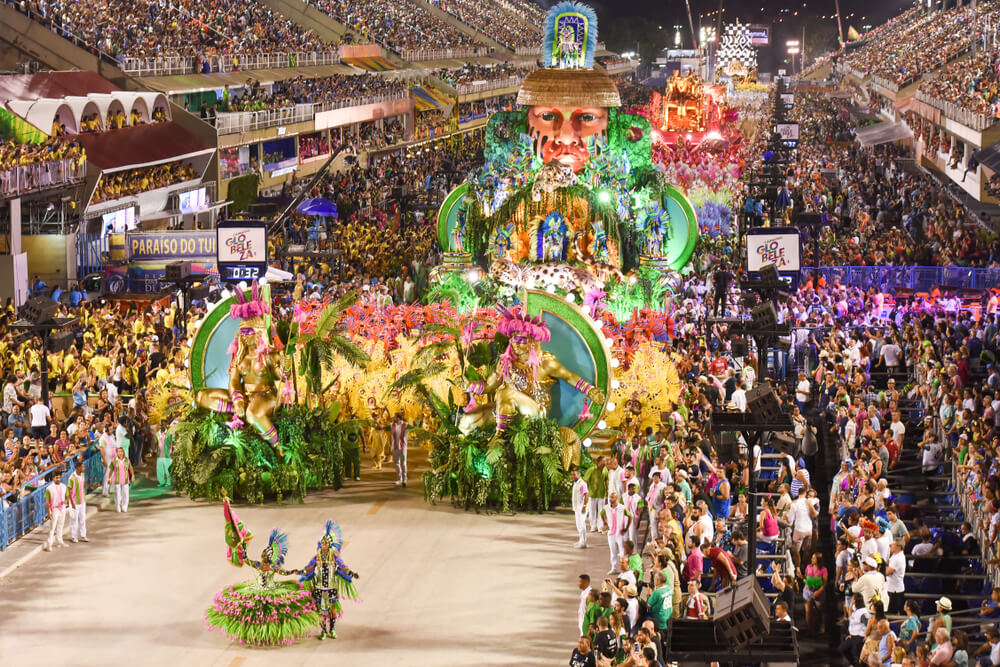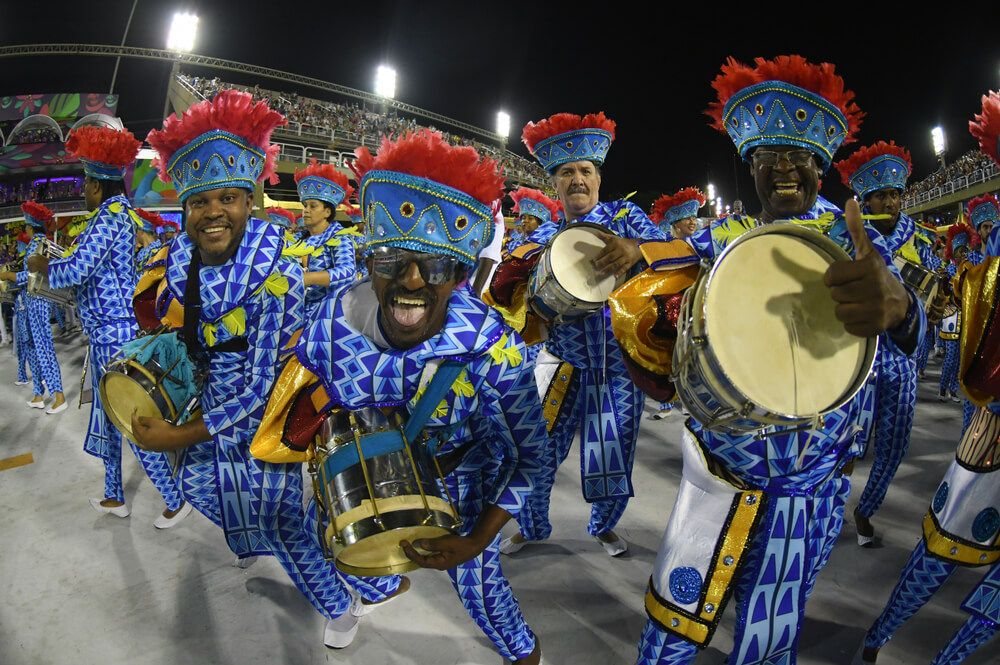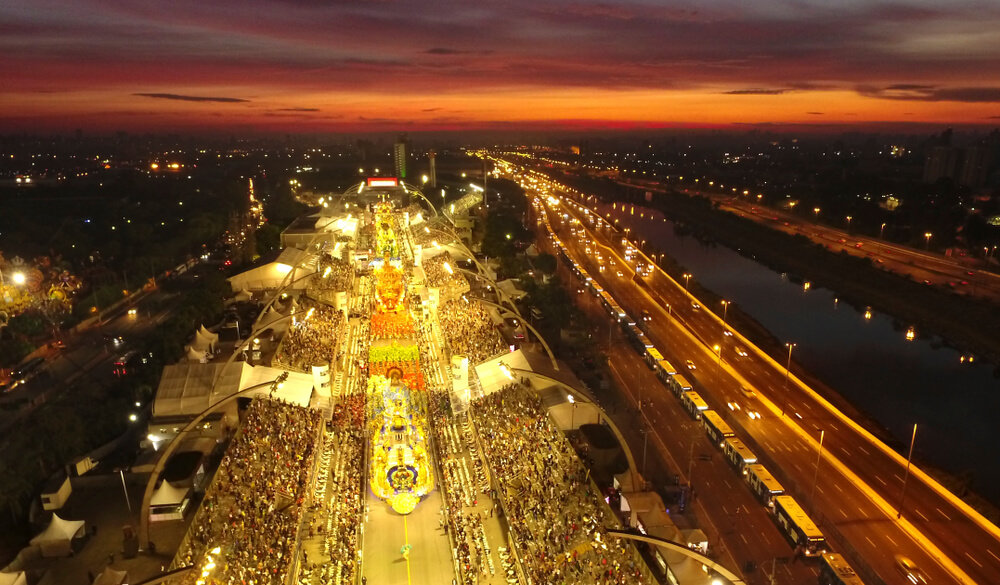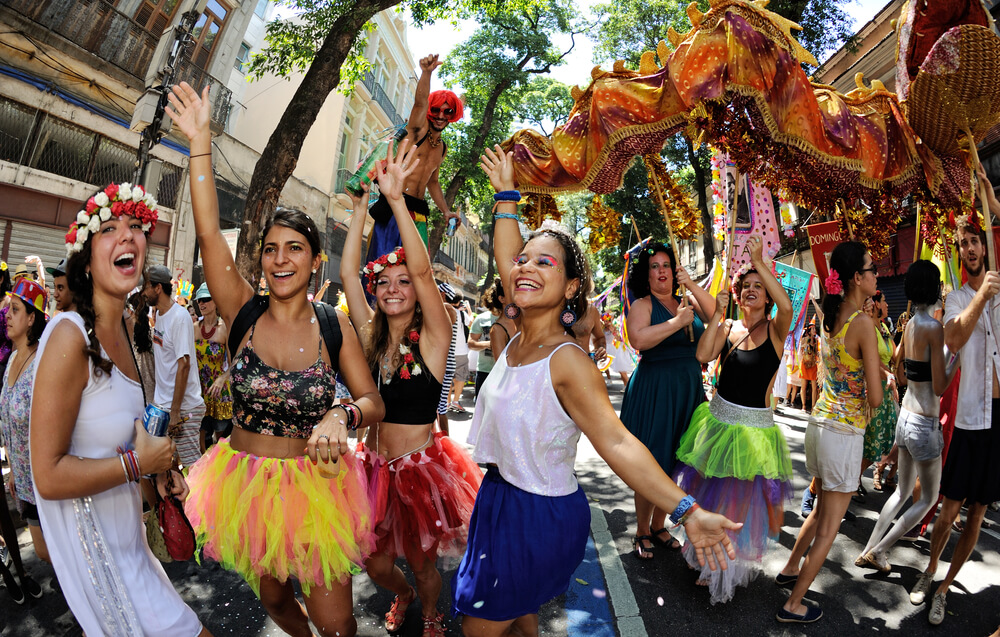Everything you need to know before going to Rio Carnival
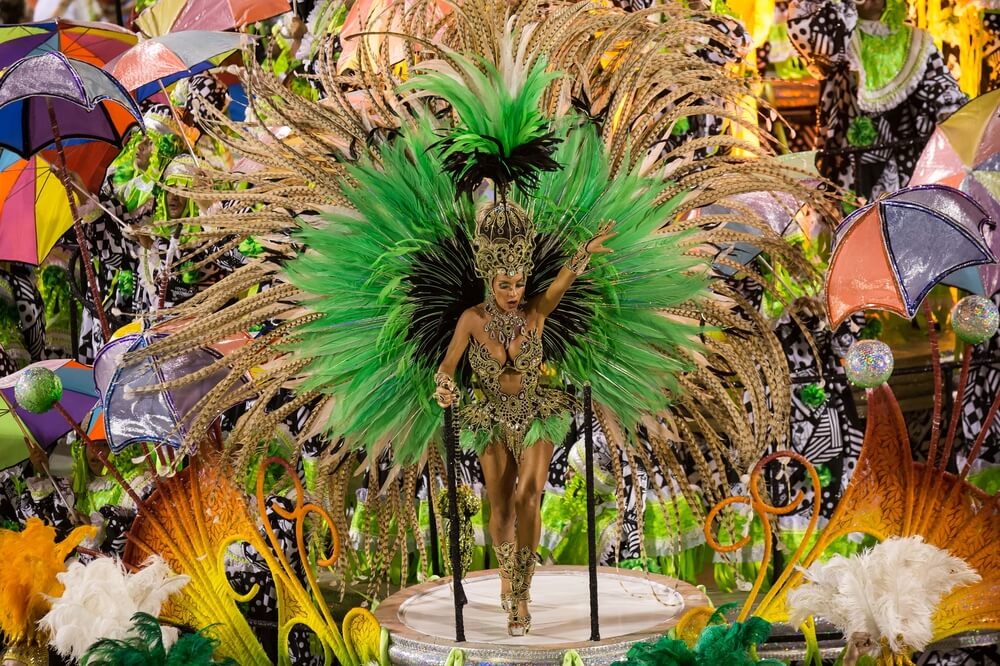
So, between caution and practical information, here’s everything you need to know before attending Carnival in Rio.
First of all, what is Rio Carnival?
A few numbers to start with:
- It’s the biggest parade on the planet and one of the most well-known celebrations in the world.
- 1 full year of preparation
- 1 event widely broadcast on television with more than 2 billion viewers.
- In 2018, the festival attracted 6.5 million people, including around 1.5 million tourists, and injected R$3.02 billion into the Carioca economy!
- 70 samba schools, including 13 from the “special group”, the carnival elite, compete for the title of best school in the city!
- 720 metres of samba – that’s the length of the sambadrome where the dancers and their floats will perform to the applause of 85,000 spectators!
- More than 500 blocos organised all over the streets.
- 7 million litres of beer and 32,000 public toilets (and a fine of about 130 euros for those who relieve themselves on the pavement!)
- Nearly 90% occupancy of the city’s hotels.
The origins of Carnival
The tradition of Carnival dates back to antiquity. In the 2nd century BC, Babylon celebrated “The Sacred” in honour of the goddess Anaïtis and the return of spring. In Rome, the “Saturnalia” was celebrated in honour of the god of agriculture and time, Saturn. In both cases, the order was reversed and, for 5 days, slaves became masters and masters became slaves.
The Greeks, for their part, honoured the god of wine, vegetation and fertility (Dionysus), and organised parades and theatrical performances.
The Catholic Church, initially hostile to these pagan festivals, eventually adopted them as its own, and Carnival became an escape valve before Lent. It was necessary to let off steam to avoid rebellion during this long period of deprivation. The name Carnival comes from Carne and levare, which literally means “to remove the meat”.
Carnival came to Brazil with the Portuguese settlers, who brought with them their tradition of the “Entrudo”. At the first Carnival in Rio, people danced the waltz and the polka. But this extraordinary event became what it is today thanks to the enormous tribal influence of slaves from Africa, especially in the creation of masks and costumes with feathers, bones and many natural elements.
Find out more in our audio guides about samba, slavery and African cultural heritage.
The main events
In a nutshell, the carnival is divided into two parts: a paid part, which takes place in the Sambadrome, and a popular, semi-organised part, which is held free of charge in the streets of the city: the famous blocos.
#1 The parade at the Sambadrome
This is the highlight of Carnival. It’s what you see on TV and in magazine pictures. You have to pay to go to the Sambódromo, where you can see the different parades of the competing samba schools. It’s an electric, galvanising atmosphere and an impressive spectacle.
How does the parade work?
The gates open at 17.00 so that spectators have time to settle in and find their seats. Children under 5 years old are not allowed in the Sambadrome.
The opening ceremony starts around 20:00 and the show ends around 6:00. Of course, it is not necessary to attend the whole event.
The samba schools are divided into several categories. Each has its own colour code and flag to make it easily recognisable.
The best schools, the special group competing to be crowned champion, parade last on Sunday and Monday. The “A” series group, made up of the former “A” and “B” group schools, parades on Friday and Saturday. The schools play for their place in the special group the following year. The schools “B”, “C”, “D” and “E” parade in front of the Sambadrome in the hope of being part of group “A” the following year.
Fireworks are launched at the entrance of each school. Afterwards, the schools must present a performance of between 65 and 75 minutes duration, under penalty of penalty. 0.1 point is deducted from the overall mark for every minute not used or exceeding the time limit. This is no laughing matter.
From the start of the parade, the school has exactly 2h30 to complete its parade and disperse. The way must be clear for the next school, the path must be cleared, all floats must be removed, etc. Otherwise, beware of fines of up to 20,000 euros!
Everything is codified and regulated! To be valid, a Samba School must :
- have between 2,500 and 4,000 participants
- have a minimum of 200 percussionists
- 70 Bahian women (no men allowed)
- An opening committee of 10 to 15 participants
- A maximum of 250 directors
- 5 or 6 floats with a maximum size of 8.5 metres wide and 9.3 metres high (to pass under the tower at the end of the runway).
- No animals, markings or genitalia (not even painted 😉 )
Understand the parade:
Let’s not forget that the Rio Carnival is first and foremost a competition judged by 36 judges. Here are the criteria used to qualify the samba schools:
- Bateria: the percussionists who set the rhythm of the parade.
- Samba-Enredo: the music and the lyrics.
- Harmonia – the harmony between the voice and the drums.
- Evolução – the evolution of the parade, homogeneity and alignment.
- Enredo – the theme: each school chooses a theme, and here it is judged whether it is represented coherently. The judges receive a synopsis of the parade and explanations of the symbols used.
- Alegorias e Adereços: the floats and accessories, judged on innovation, creativity and finish. Undoubtedly the most impressive of the carnival.
- Fantasias: the costumes, like the floats, are judged on their appropriateness to the theme, originality and quality.
- Comissão de Frente: the opening committee. This group of about ten people opens the parade, presents the theme and is judged on its choreography.
- Mestre Sala e Porta Bandeira: the master of ceremonies and flag bearer. Here the pair of standard bearers is judged. The woman wears the school colours and the master of ceremonies dances around her to show her off.
Which seats to choose?
The immense Sambadrome, designed by the brilliant architect Oscar Niemeyer (responsible for Brasilia and the incredible Museum of Contemporary Art in Niteroi), is a huge 12-metre wide and almost 800 metres long, framed by enormous bleachers. If you come to Rio outside of Carnival, you can visit it.
There are 4 main categories of seats, available at prices ranging from 15 to over 1,000 euros per person. It all depends on the comfort you choose, the location in the Sambadrome and the night of the parade. The Sectors are numbered from 1 to 13, with an odd and an even side.
The entire complex has capacity for 88,500 people. Tickets are in high demand, so early booking is recommended. However, to avoid counterfeits (beware of scalpers and counterfeit tickets), your ticket will be issued just one week before the Carnival starts.
- Grandstands: these are the most affordable seats and, therefore, the most popular. Situated high up, they give a bird’s eye view of the parade. In the grandstands, sector 9 is for tourists. Don’t hesitate to do as the Brazilians do and bring a cushion to sit more comfortably, or even a pair of binoculars!
- The frisas or open boxes: these seats are mid-priced and offer a better view of the parade, as close as possible to the runway.
- The cabins – the luxury suites: these are the best seats, where the celebrities and politicians are, and come with a waiter and free buffet.
- Assigned seats: you can also reserve a seat that will be yours for the whole evening. They are moderately priced and are assigned.
Attention: if you have an unnumbered seat in the stands, remember to get to the Sambadrome early!
How to get to the Sambadrome?
Carnival nights make it impossible to get around Rio. The best thing to do is to take the metro, which is easy to use and open 24 hours a day throughout Carnival. There are two different stations to get there. Depending on which sector you are in, you will have to get off at a different stop – make no mistake, it can be very tricky to cross!
- If you have a seat on the even side: get off at “Praça Onze” station.
- If you have a seat on the odd-numbered side: get off at “Central” station.
Attend the rehearsals
If you can’t make it to the official parade, or if you don’t have the budget, attending the rehearsals can be a good alternative. As Carnival approaches, schools rehearse on the dance floor of the Sambadrome. This is a show without floats or costumes, but it is free and a good opportunity to dance samba. You can find the rehearsal schedule on the official Carnival website.
Take part in the parade
For some years now, samba schools have been opening their doors to tourists wishing to take part in the parade. This sometimes raises ethical questions, as does any commercialisation of a popular product. Each samba school represents a favela and the participants have trained all their lives to get there. But it is also a way to raise funds and spread the culture from within.
You have to sign up for a samba school, know the steps and be able to keep up for more than an hour, rent a costume and arrive on time with your guts firmly in your mouth on the day of the show.
Tip:
You can also attend the palamares parade of the best schools and the champion school on the Saturday after the carnival. The atmosphere is more relaxed, the stress of the competition is over, and the prices are around 30% cheaper.
# 2 Street Blocos
This is Rio’s other Carnival, a popular and free party organised by the residents of each neighbourhood for a fortnight before the official Carnival.
The “bandas” or “blocos” gather around a neighbourhood, an association, a bar or a theme and take to the streets of Brazil’s ancient capital.
These popular demonstrations, which began in the early 19th century, gave rise to the first samba schools.
Today, there are about 500 blocos authorised by the prefecture to parade, in addition to some smaller private initiatives.
Parallel to the official festivities, this festival of animation, so representative of Rio Carnival, is held. It is an opportunity to party with the Cariocas and experience the excitement of Carnival from the inside. The quality of the bloco can vary greatly from one group to another, so don’t hesitate to ask for advice from a local, at your hotel or on Facebook groups for French expats in Rio.
Don’t forget to dress well, cover yourself in glitter and sun cream, wear comfortable shoes and don’t bring valuables.
Although the party atmosphere is in full swing, stay alert, hydrate and take care of yourself.
200 audioguided tours for cities all around the world
Download